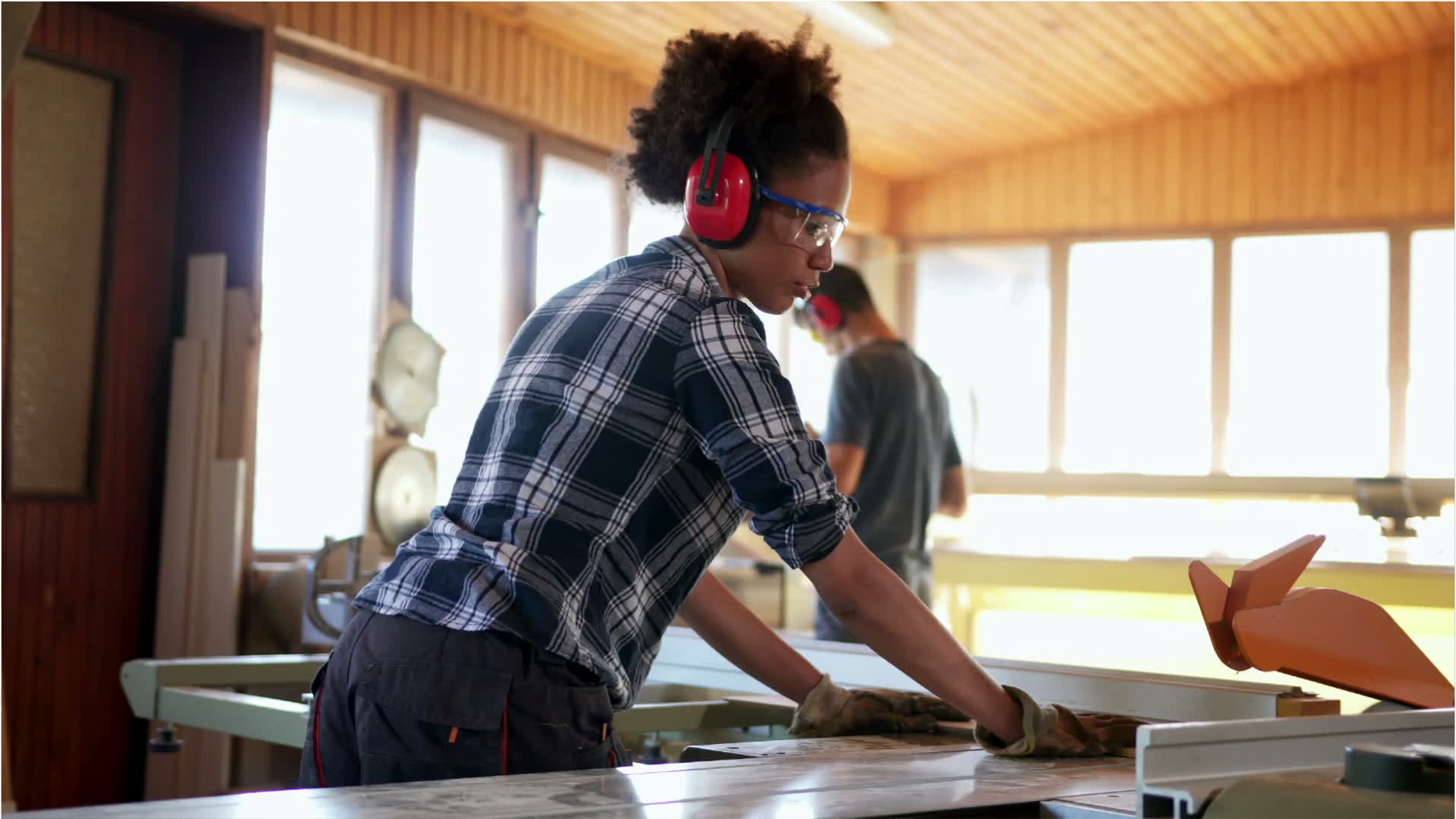Woodworking Machine Setters, Operators, & Tenders
Cabinet Maker, Machine Operator, Sander, Sander Operator
What they do:
Set up, operate, or tend woodworking machines, such as drill presses, lathes, shapers, routers, sanders, planers, and wood nailing machines. May operate computer numerically controlled (CNC) equipment.
On the job, you would:
- Set up, program, operate, or tend computerized or manual woodworking machines, such as drill presses, lathes, shapers, routers, sanders, planers, or wood-nailing machines.
- Examine finished workpieces for smoothness, shape, angle, depth-of-cut, or conformity to specifications and verify dimensions, visually and using hands, rules, calipers, templates, or gauges.
- Start machines, adjust controls, and make trial cuts to ensure that machinery is operating properly.
Knowledge
Engineering and Technology
- mechanical
Manufactured or Agricultural Goods
- manufacture and distribution of products
Skills
Basic Skills
- keeping track of how well people and/or groups are doing in order to make improvements
- talking to others
Problem Solving
- noticing a problem and figuring out the best way to solve it
Abilities
Hand and Finger Use
- hold or move items with your hands
- keep your arm or hand steady
Controlled Movement
- quickly change the controls of a machine, car, truck or boat
- use your arms and/or legs together while sitting, standing, or lying down
Personality
People interested in this work like activities that include practical, hands-on problems and solutions.
They do well at jobs that need:
- Attention to Detail
- Dependability
- Cautiousness
- Achievement Orientation
- Stress Tolerance
- Integrity
Technology
You might use software like this on the job:
Computer aided design CAD software
- Autodesk AutoCAD
- Dassault Systemes CATIA
Video creation and editing software
- YouTube
Graphics or photo imaging software
- Adobe Creative Cloud software
- Adobe Illustrator
Education
Education: (rated 2 of 5)
high school diploma/GED or
no high school diploma/GED
usually needed
no high school diploma/GED
usually needed
Job Outlook
Below Average
New job opportunities are less likely in the future.
Explore More
- Cutting & Slicing Machine Setters, Operators, & Tenders
- Grinding, Lapping, Polishing, & Buffing Machine Tool Setters, Operators, & Tenders, Metal & Plastic
- Lathe & Turning Machine Tool Setters, Operators, & Tenders, Metal & Plastic
- Milling & Planing Machine Setters, Operators, & Tenders, Metal & Plastic
- Sawing Machine Setters, Operators, & Tenders, Wood
You might like a career in one of these industries:
See more details at O*NET OnLine about Woodworking Machine Setters, Operators, & Tenders.





